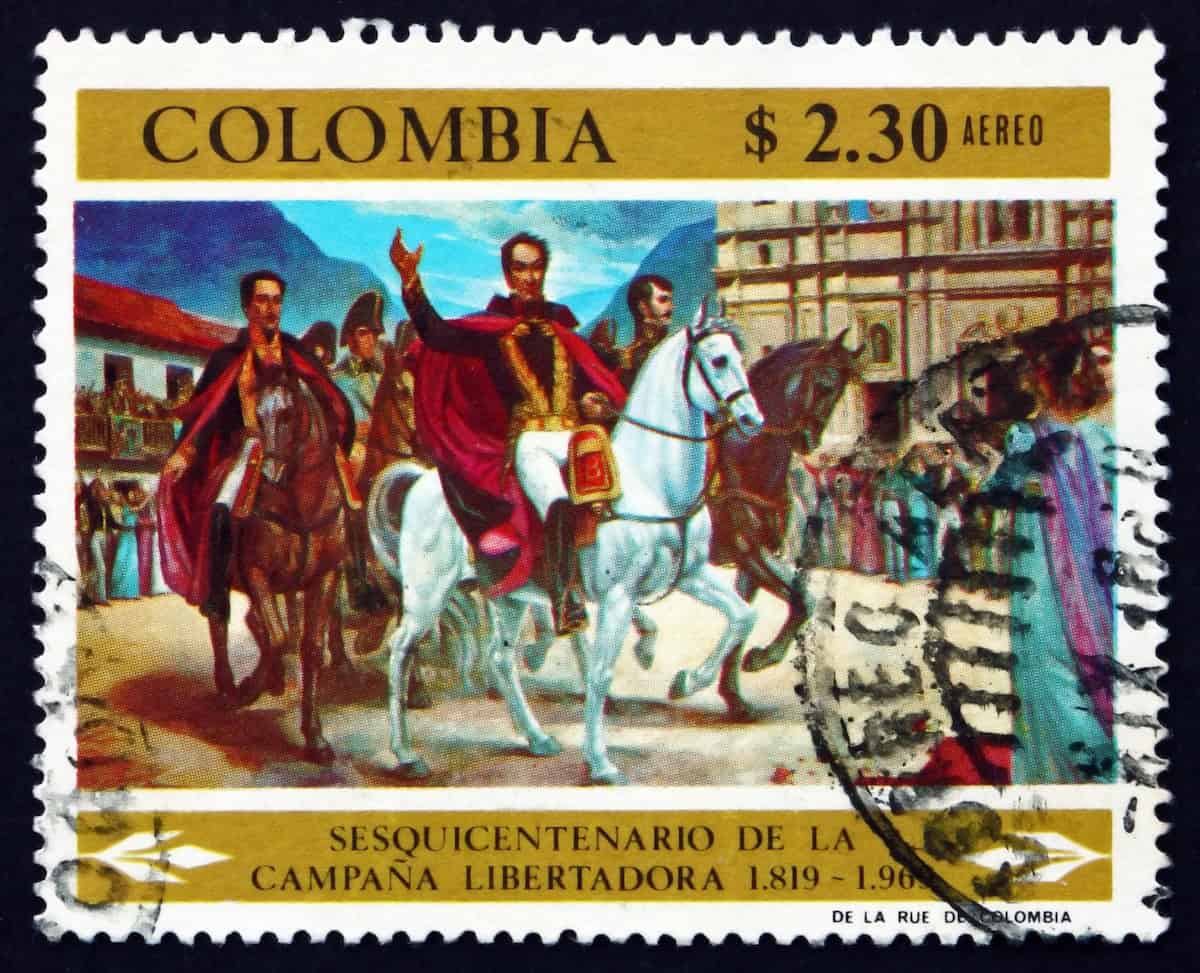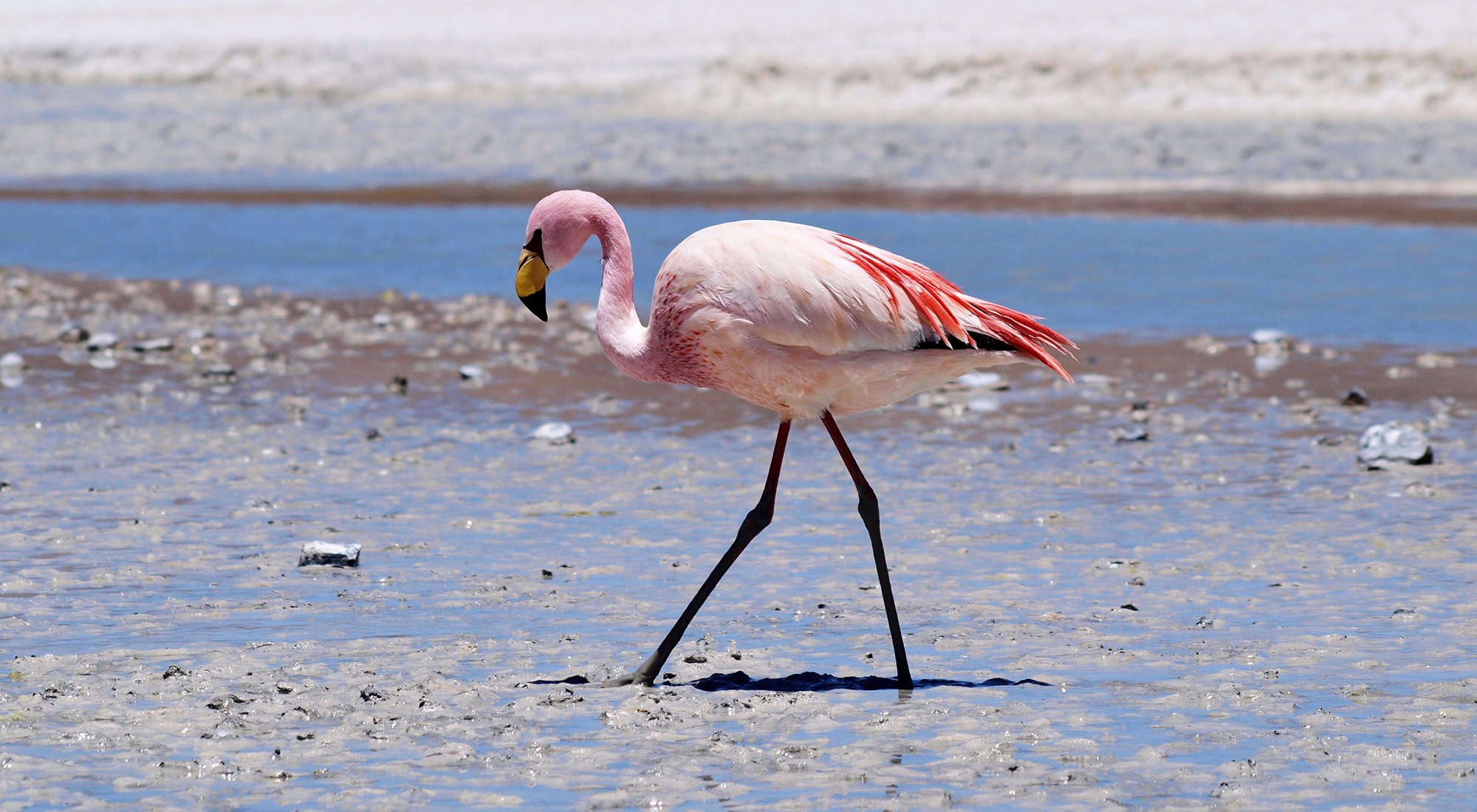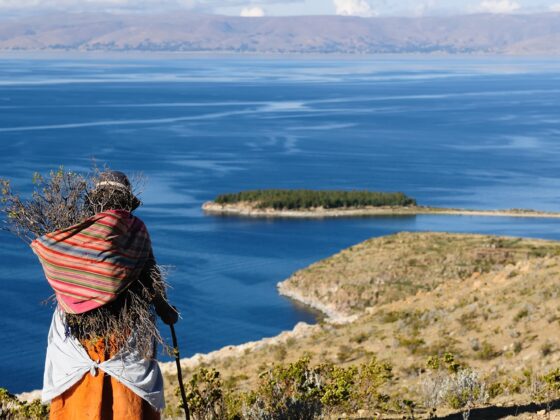Two centuries ago, in August 1819, the patriot commander Simón Bolívar defeated royalist Spanish forces to liberate Colombia and kick-start the South American independence movement. But who was he – and where can you follow in his footsteps?
Bolívar in brief
Simón José Antonio de la Santísima Trinidad Bolívar Palacios Ponte y Blanco was born in 1783 in Caracas, in the Spanish-ruled Captaincy of Venezuela, not long after it separated from the larger Viceroyalty of New Granada. From an aristocratic family, he finished his schooling in Spain; while in Europe he saw that Spanish imperial power was waning, and in 1807 returned to Venezuela, beginning his campaign for independence the following year. Despite early successes, in the mid-1810s Spain held onto its South American colonies. In 1817, though, Generals José de San Martín and Bernardo O’Higgins led troops over the Andes from Argentina to liberate Chile, and two years later Bolívar achieved a similar feat. Setting out from Mantecal, Venezuela on 26 May, he marched a small, ill-equipped band of patriot soldiers through swamps during the wet season, across the Andes and through the bleak, freezing Páramo de Pisba before descending to defeat Spanish royalist forces at Vargas swamp and – the pivotal battle on 7 August 1819 – at Boyacá Bridge, leaving the way clear to Bogotá. He entered the capital on 10 August, to be hailed as El Libertador. Following the liberation of Colombia, Venezuela followed two years later, then Ecuador in 1822 and Peru in 1824. Bolívar was president of Gran Colombia (which incorporated Panama, Ecuador and Venezuela) from 1819 to 1830, but died of tuberculosis that year.
Where to spot Simón
Boyacá Bridge, Colombia
Descending from the Andes into Colombia in 1819, Bolívar’s route to Bogotá was blocked by the royalists at a bridge crossing the Río Boyacá, 16km south of Tunja. Despite the strength of their position, the Spanish were routed at the first attack and disintegrated. With the loss of only 13 patriots killed and 53 wounded, Bolívar’s men captured 1600 royalist soldiers and 39 officers. Only 50 royalists escaped, and when these told their tale in Bogotá, the Viceroy Samao fled in such haste that he left half a million pesos of the royal funds. Four days later, Bolívar entered Bogotá as the liberator of Colombia. Overlooking the bridge at Boyacá is a large monument to Bolívar; there are several other monuments, an exhibition hall and a restaurant at the site, too.
Bogotá, Colombia
The heart of the city and government is Plaza Bolívar, a good starting point for exploring the colonial district. It is claimed that the first ever statue of South America’s liberator, Simón Bolívar, stands here. Oon the east side of the plaza, visit the Casa del Florero or Museo de la Independencia, where the first rumblings of independence began; it houses the famous flower vase that featured in the 1810 revolution. Its 10 rooms display the history of Colombia’s independence campaigns and their heroes. It still has original early 17th-century Spanish-Moorish balconies. Bolívar once lived in the Palacio de San Carlos, which now houses the Foreign Ministry. He is said to have planted the huge walnut tree in the courtyard. On 25 September 1828, there was an attempt on his life. His mistress, Manuela, thrust him out of the window, and he hid for two hours under the stone arches of the bridge across the Río San Agustín (now Calle 7).
Caracas, Venezuela
The Venezuelan capital’s principal square was renamed Plaza Bolívar in 1842, when the Liberator’s body arrived in Caracas from Santa Marta (where he died in 1830). The 4m-high equestrian statue of Simón Bolívar that dominates the square was inaugurated on 7 November 1874; it’s a replica of the statue by Adamo Tadolino in Plaza Bolivar in Lima, Peru. The Venezuelan people won the first step towards their independence here when a popular rebellion rose against the Spanish crown on 19 April 1810. Bolívar’s remains now lie in a gleaming white mausoleum, ordered by former president Hugo Chávez, alongside the National Mausoleum on the northern outskirts of the capital. His birthplace (Casa Natal del Libertador), a single-story 17th-century courtyard house in Caracas, is now a museum to his life; another adjacent museum contains artefacts relating to Bolívar and this independence campaign.
Ayacucho, Peru
Ayacucho became an important base for the army of Simón Bolívar in his triumphant sweep south from the Battle of Junín. It was here, on the Pampa de Quinua, on 9 December 1824, that the decisive Battle of Ayacucho was fought, bringing Spanish rule in Peru to an end. In the middle of the festivities following the battle, the Liberator decreed that the city be named Ayacucho, ‘Place of the Souls’, instead of its original name, Huamanga. The pivotal battle is reenacted on the Pampa de Quinua on 9 December each year. A stroll down 28 de Julio leads to the prominent Arco del Triunfo (1910), which commemorates victory over the Spaniards.
Bolivia
The landlocked South American country is, of course, named after the Liberator, and there are numerous monuments to Bolívar in Bolivia – as indeed there are in cities across Colombia, Ecuador, Peru, Venezuela and Panamá, as well as worldwide, such as in Washington DC, Berlin, Paris, Vienna and many more places. In Plaza 25 de Mayo, Sucre, you’ll find the Casa de la Libertad. Formerly the Assembly Hall of the Jesuit University, where the country’s Declaration of Independence was signed, this house contains a famous portrait of Simón Bolívar by the Peruvian artist Gil de Castro, admired for its likeness. And in La Paz, not only can you admire the Liberator astride his horse in statuesque form, you can watch the football team named for him – Club Bolívar, arguably the country’s most successful.










